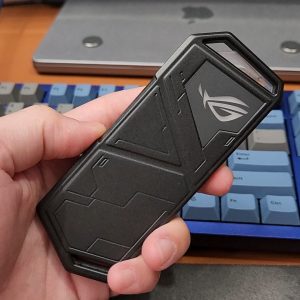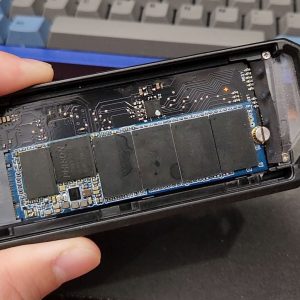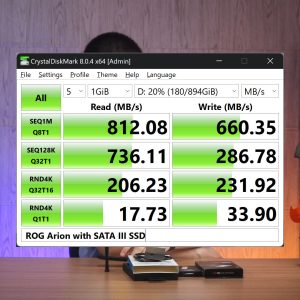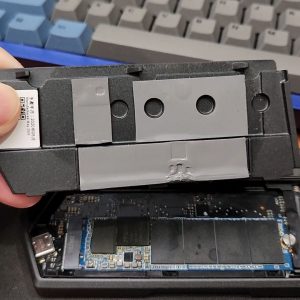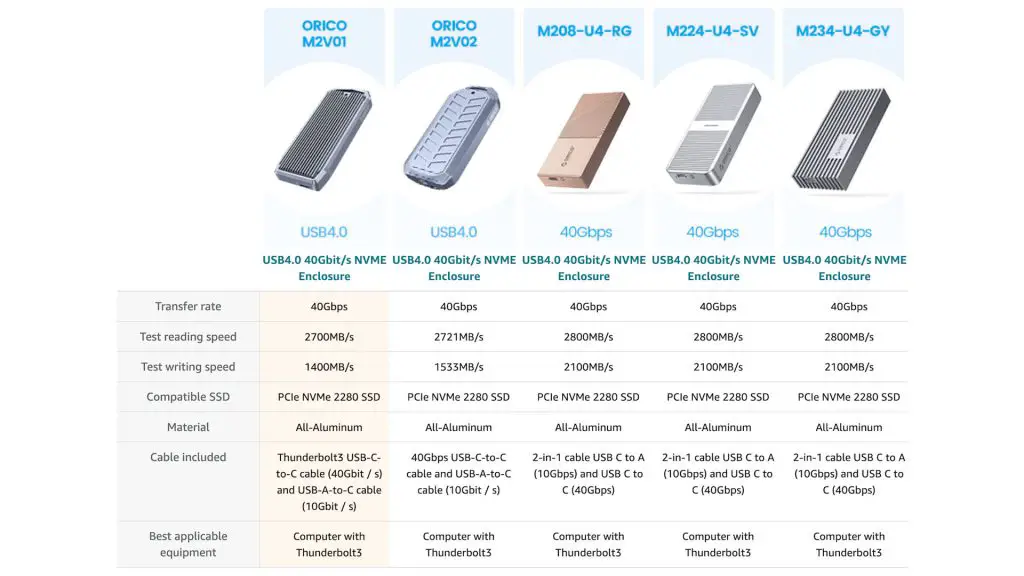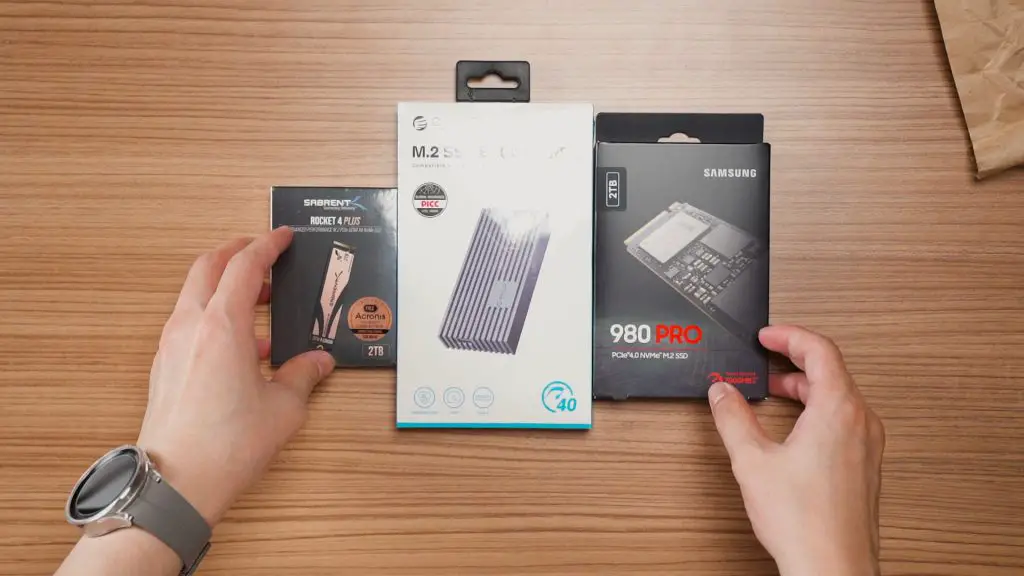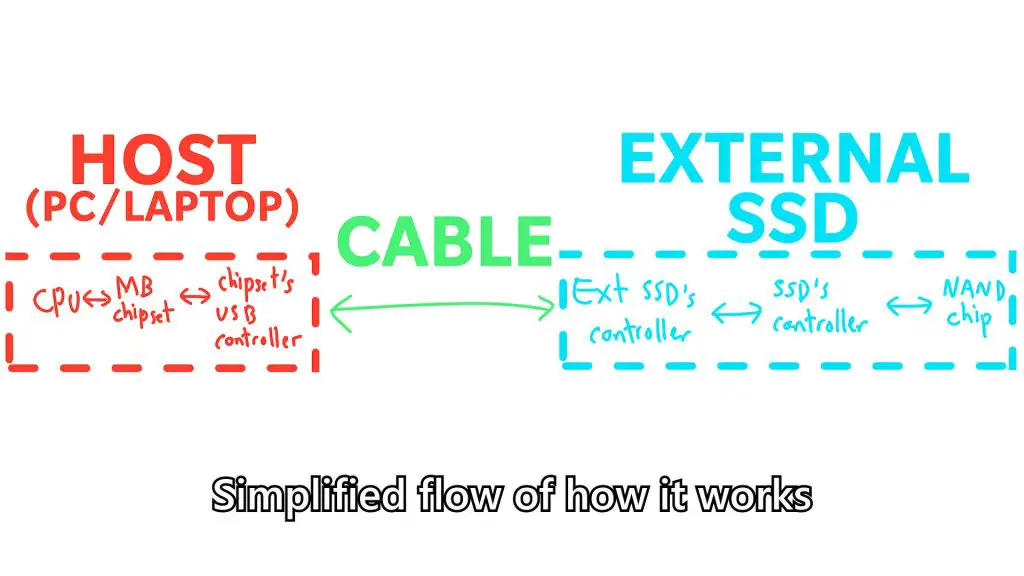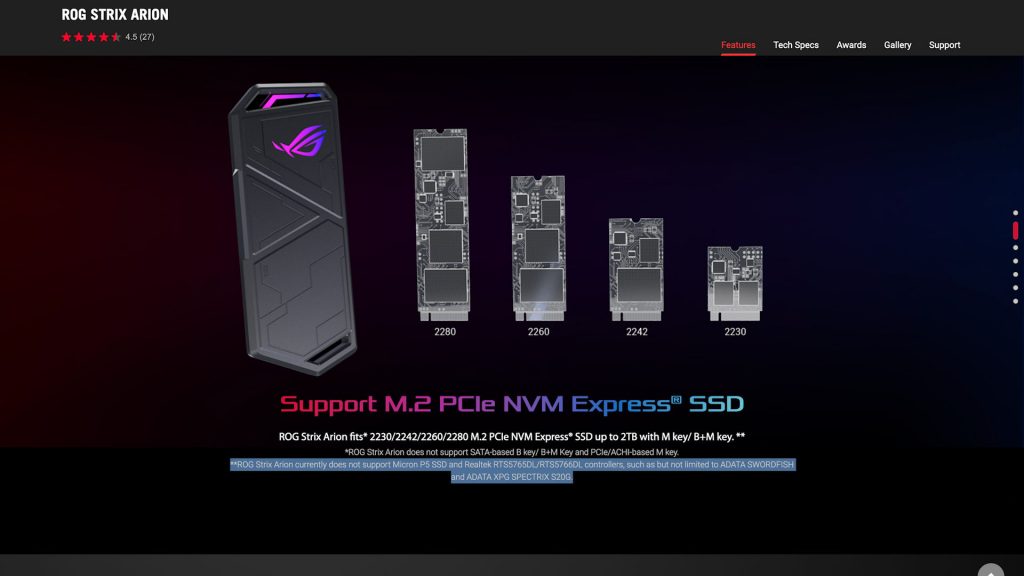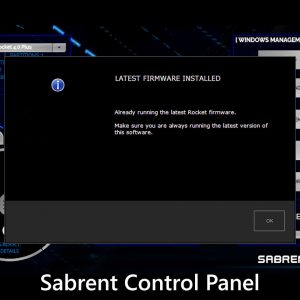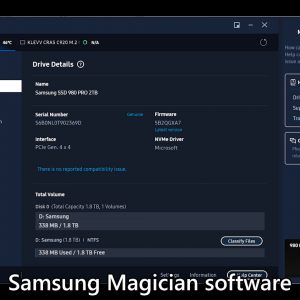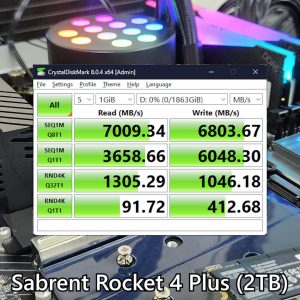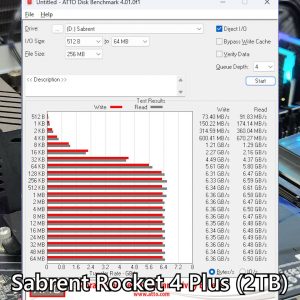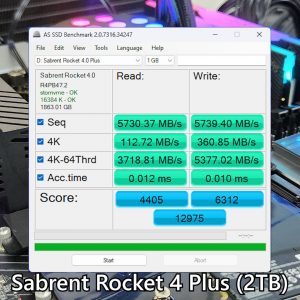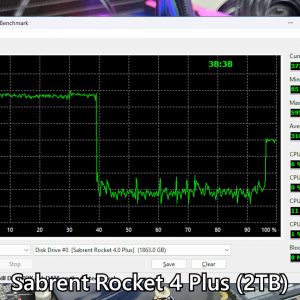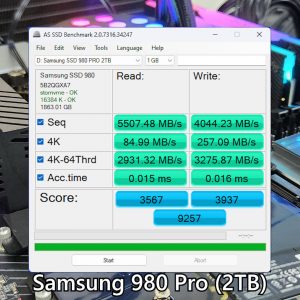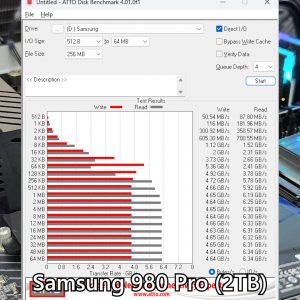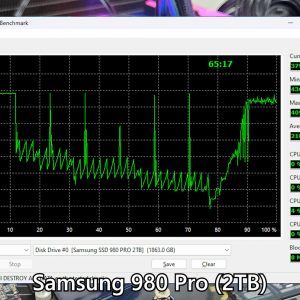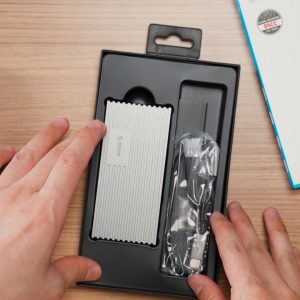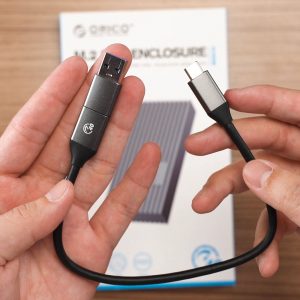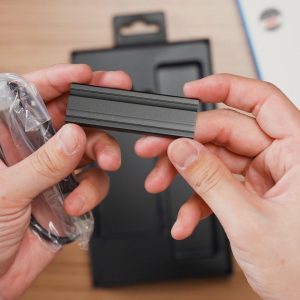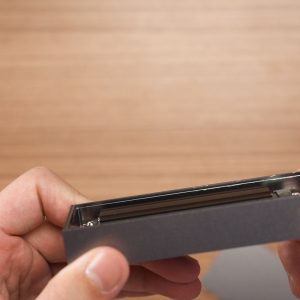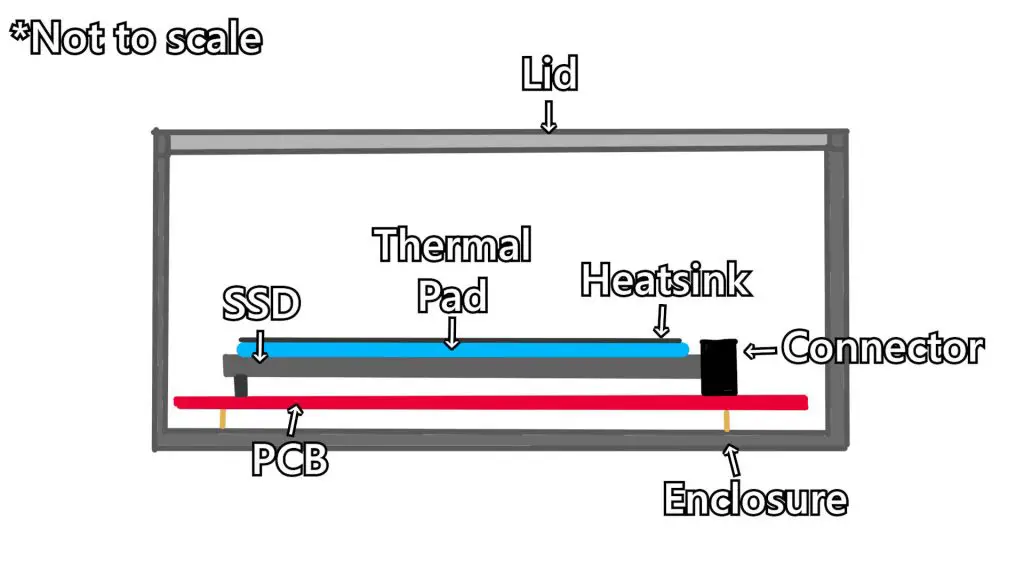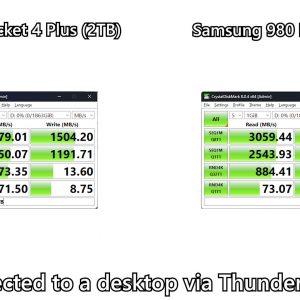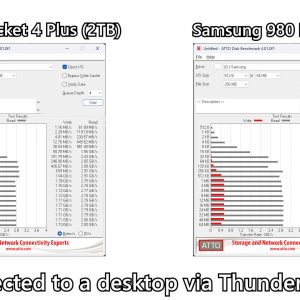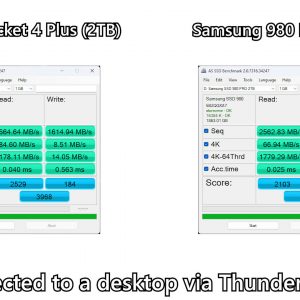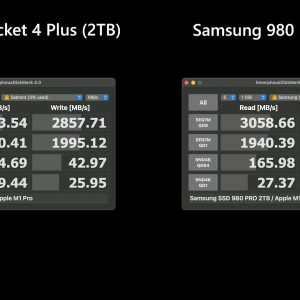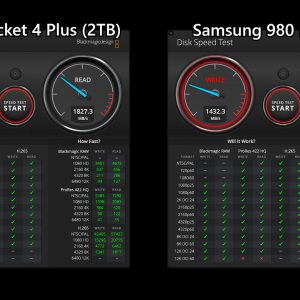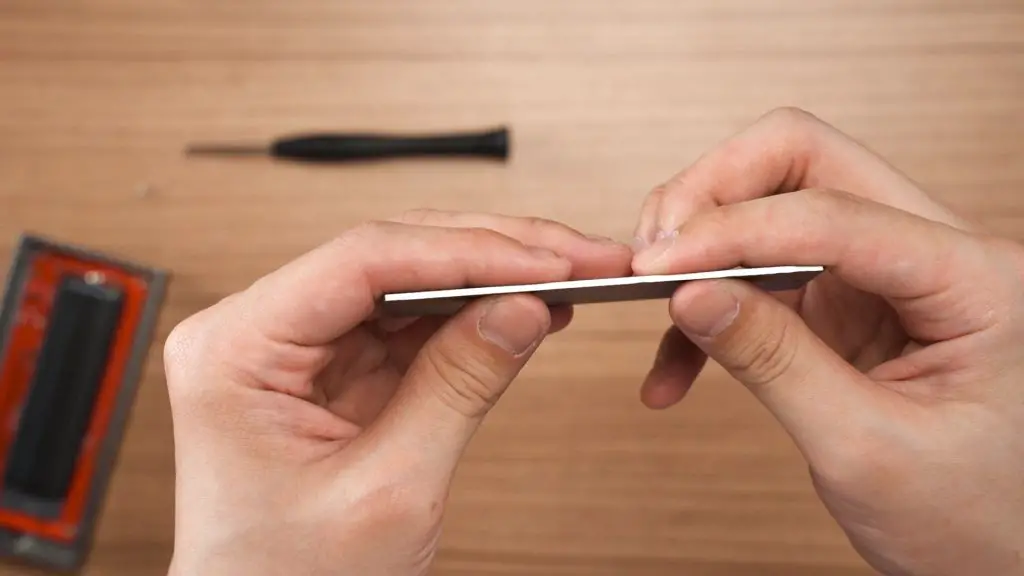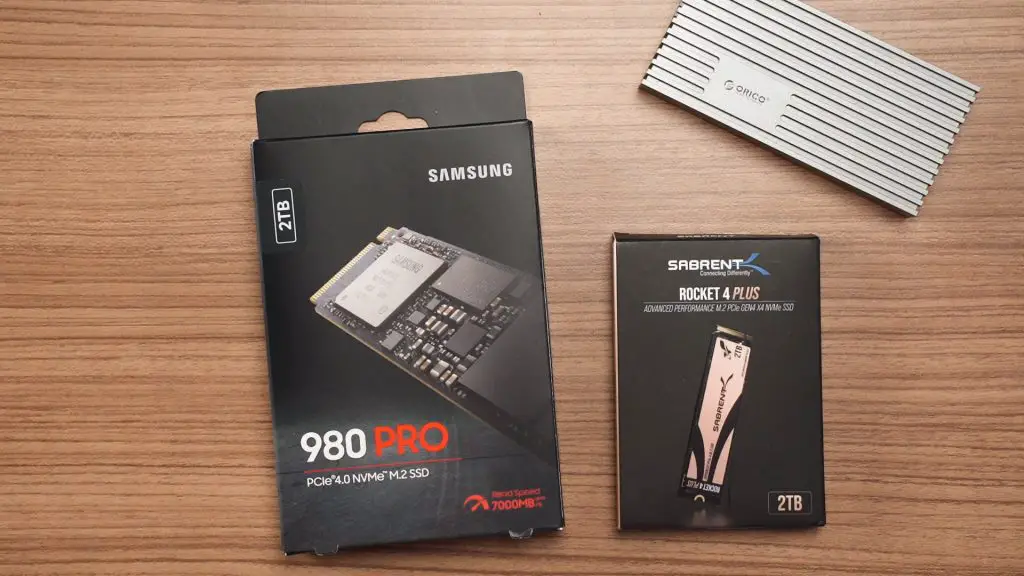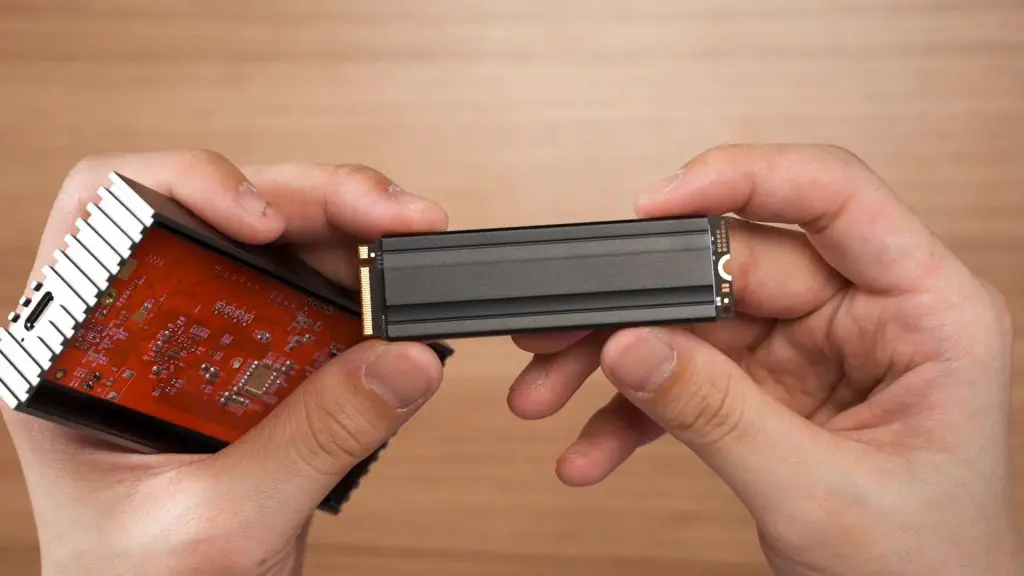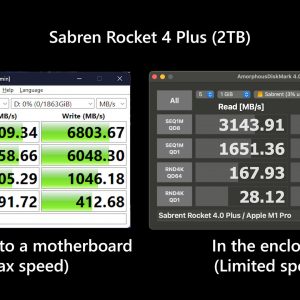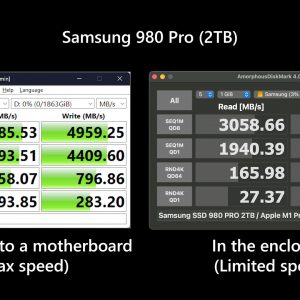A few months ago, we did a video talking about how to choose the best SSD and external SSD enclosure for yourself. In that video, we were using one of the many enclosures that Orico has in their catalog, alongside the PNY CS2140 SSD.
After tasting the speed and immediately falling in love with it, I set off on a quest to use the steps that I mentioned in that video to create my own perfect USB 4.0 SSD. And I did. I created my own perfect SSD.
After about 3 months of using it – my question becomes, is it actually worth the price? Here’s what I found out.
So, before we begin, we have to talk about some backstories. I was using the ROG Arion external SSD enclosure for a few years and it has a SATA III SSD inside, which means the enclosure still had some leeway – but not much since it is a USB 3.2 Gen 2 enclosure with 10Gb/s maximum throughput. Realistically, I only got about 750MB/s maximum out of this enclosure. Pretty good, considering that the back panel also acts as a heatsink.
We waited for a month and this amazon package arrived. As for what I bought, we’ll have to talk about the entire thought process. The first step was choosing a USB 4.0 enclosure. I did some digging and I ended up back with Orico since they have a lot more choices and are also readily available. But… their product naming is horrifying. Eventually, I found this on their Amazon product page.
This handy table has all of the crucial features that I need and I thought hey – three of these enclosures has the same specs so I guess the only difference is the design and color. So, I bought the M234-U4-GY enclosure thinking that the top will be used as a heatsink and the fins will be great for heat dissipation. More on this later.
As for the SSD, we actually bought two. We bought the 2TB Samsung 980 Pro and Samsung released the 990 Pro about a month or two after we bought it – just bad luck in terms of timing I guess – and we also bought the 2TB Sabrent Rocket 4 Plus.
The reason why we bought two SSD is that we actually need another one so we bought two 2TB SSD from different brands to test out how they interact with the SSD enclosure.
Remember, certain SSD enclosures do have compatibility issues with certain SSDs.
We have already seen such issues on the ROG Arion whereby it specifically stated that any SSD that is using this specific Realtek controller will not work with the Arion.
Before we install the SSD into the enclosure, I made sure that they were on the latest firmware and we did a quick speed test on the desktop first.
The 2TB Sabrent Rocket 4 Plus with a proper heatsink and thermal pad, achieved this speed. It’s absolutely insane and at that time, I think it is considered to be the “world’s fastest SSD”.
The Samsung 980 Pro, on the other hand, is definitely slower than the Sabrent Rocket 4 Plus, but not by far.
So, with this in mind, I installed the Sabrent Rocket 4 Plus SSD into the enclosure to get the highest speed possible – at least in theory.
With all those preliminary tests out of the way, it’s time to actually install the SSD inside the enclosure. The Orico enclosure is fairly simple – comes with a convertible cable too. Just remember that if you want to use it in USB 4 mode with up to 40Gb/s speeds, you’ll need to use USB-C. Once converted to USB-A, you’ll only get 10Gb/s max.
We used the included screwdriver to open up the panel and here, we can just slot in the SSD and start using the enclosure. Before we do that though, let’s talk about this piece of accessory. When I found this inside the box, I was immediately disappointed. That means the SSD will not be touching the the metal housing itself, not even when the included 1mm (approximately) thermal pad is installed.
That means, the SSD will have a heatsink when it is installed inside the enclosure, but it’ll be trapped inside like an oven. Literally an oven.
Well, I can’t do anything about it so I just proceeded with how Orico intended its enclosure to be used.
I then used a desktop with Thunderbolt 3 to do the speed tests. I can assure you that for both SSDs, the performance on that desktop was horrible. I’m not sure why since Thunderbolt 3’s maximum throughput is also 40Gb/s. And this is one of the many reasons why an external SSD won’t work as expected – mainly before of unforeseen problems or sub-optimal compatibility issues like this.
But never mind that – I’m going to be using this high-speed external SSD with my M1 Pro MacBook Pro to edit videos anyway. So, I used the Amorphous Disk Mark (which is a Mac version of Crystal Disk Mark) and also the iconic Disk Speed Test by Blackmagicdesign.
Turns out, their speeds are pretty similar and in the grand scheme of things, shouldn’t be that different.
But, benchmarks don’t matter – how does it impact my video editing experience? Well, quite a lot actually. When we film a video with triple cameras, then using the multi-cam feature in Premiere Pro means that all 3 videos will be read and decoded from the SSD to be displayed on the screen. Previously, triple 1080p 60fps videos can choke the ROG Arion quite hard – and thus it should be a great way to get a feel of how much performance has improved when we started using the new SSD. Surprisingly, yes – I can feel that the playback and moving the play head across the timeline is also smoother.
To have a look at everything in action, please watch our video at the top of this article.
Okay, back to the heatsink issue then. Does it affect the temperature? Actually no, let me rephrase that – does it get hot to the point that it thermal throttles? Yes. The temperatures did reach 70°C (during extreme cases of benchmarking) and I think that is because it became a hotbox inside. I could drill some holes or swap out the back panel for a mesh – and I think that would be a lot better for this SSD in terms of thermals.
Is USB 4 SSD worth it?
So at the end of the day – is it worth making your own high-speed USB 4 external SSD? Depends on your use case, actually. I transfer many gigabytes of data after every filming session – and this SSD saved me lots of time. Editing videos off of the SSD is also more enjoyable since it doesn’t lag as badly or choke or freeze for like an anxious 10 seconds before it starts responding again.
And that, I think, is where the value of this SSD comes into play. When I edit videos, I tend to focus on the process and start to move subconsciously. If Premiere Pro suddenly chokes or lags, then I immediately lost my train of thought and snapped out of my workflow.
But is it worth the price? We paid USD $415.98 or USD $335.98 depending on which SSD we paired this enclosure with – and for me personally, I think it’s worth it since I edit videos 24/7/365. Those lags and chokes always make me furious, so eliminating them instantly boosts my well-being.
If you have no particular reason to take full advantage of this SSD, then I don’t think you need such a high-speed SSD. There are plenty of not-so-high-speed SSDs that are still blazing fast, just not as cutting-edge as this.
So, for those who want to make your own USB 4 external SSD, then you can use this video as a guide on what to buy and what not to buy. I can’t recommend this enclosure because of the heatsink issue, but for the SSDs – I think we went a little overkill. We’re wasting quite a big chunk of its performance when we put them inside this enclosure. You can get and SSD that reaches 4,000MB/s sequential read and 3,500MB/s sequential write and that will already saturate this enclosure’s bandwidth.
I’m glad we did this experiment. USB 4.0 devices are taking their own sweet time to get to the market – mainly because it is only useful for those who constantly move large amounts of data.
Where to buy? (Affiliate links)
- Orico USB 4.0 enclosure that we used
- Sabrent Rocket 4 Plus (2TB)
- Amazon
- Not available locally in Malaysia lol
- Samsung 980 Pro (2TB)

